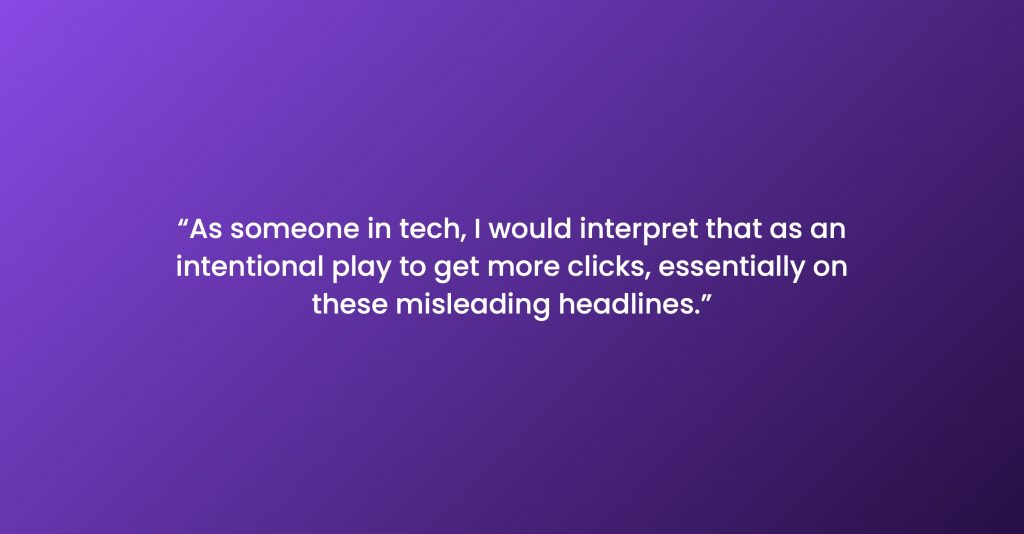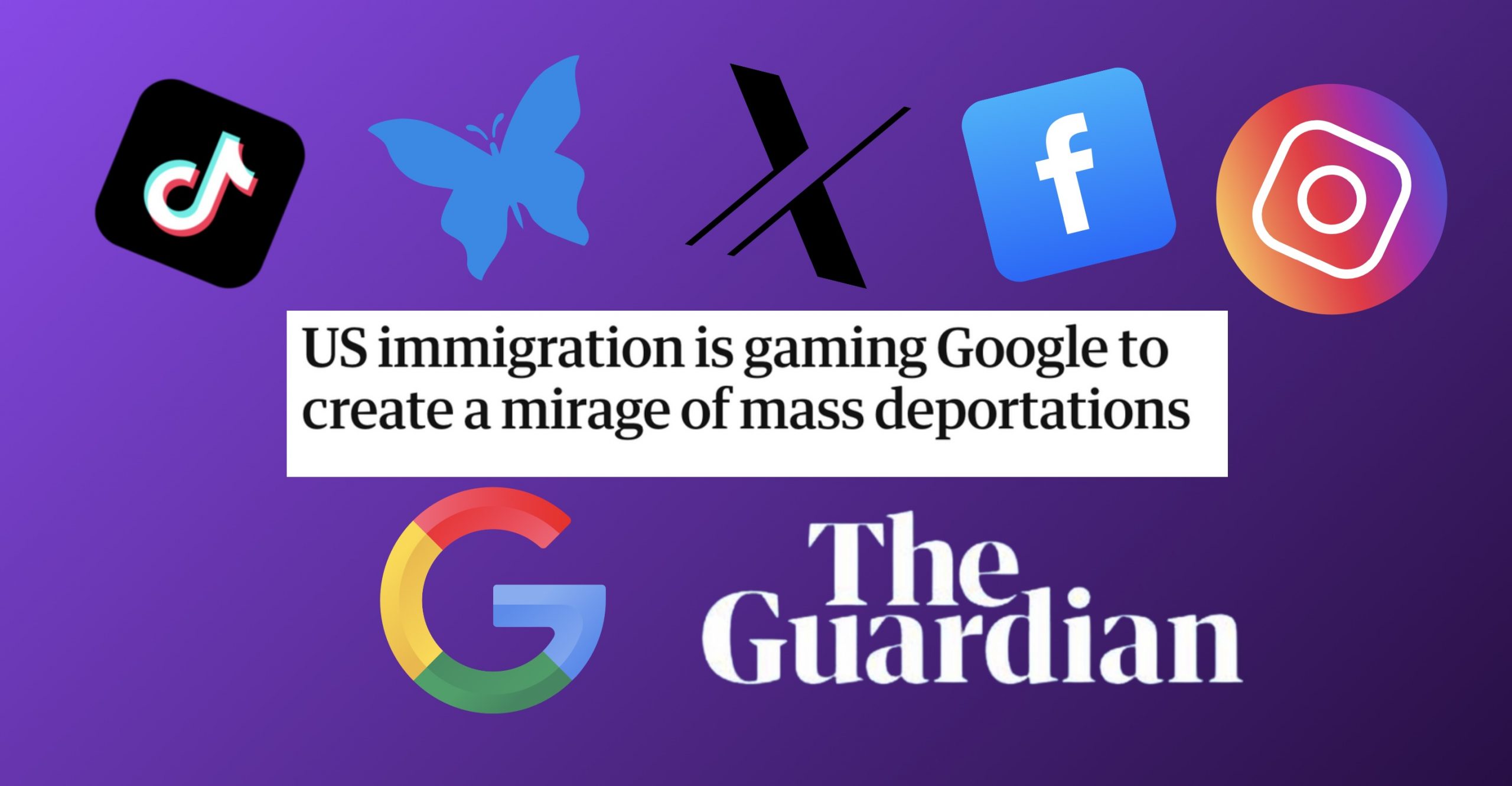In today’s digital world, information is not just put out—it’s strategically amplified, controlled and weaponized in some cases to mold public perception. A recent Guardian article highlights how U.S. Immigration and Customs Enforcement (ICE) is using search engine optimization (SEO) and old digital content to push narratives about mass deportations, reinforcing a perception of aggressive immigration enforcement. This tactic is a powerful example of how organizations—government agencies, corporations or brands—use digital tools to influence public opinion to their advantage.
Today, we are going to break down three key ways organizations mold narratives online in their favor:
- SEO and digital content strategies – How search engines are manipulated to push specific messages to the forefront.
- Social media as a narrative tool – How fear-based messaging and engagement strategies amplify influence.
- The ethics of digital influence – Where we draw the line between strategic communication and manipulation.
By understanding these tactics, we can thoroughly analyze how narratives are crafted in the digital age and what that means for truth, transparency and influence.
1. The Digital Playbook: How Organizations Use SEO to Shape Public Perception
The government agencies are increasingly using search engine optimization (SEO) to amplify certain narratives in their favor. According to Search Engine Land, SEO is the process of optimizing online content to be placed higher in search engines, increasing their visibility and occasionally their influence. When they ensure certain articles appear at the top of the search engine, these agencies can control the information the public engages with, which can lead to shaping thoughts and opinions around specific topics. These government agencies can use digital records to their advantage for SEO efforts by finding high-quality information from reputable sources. Based on what I found from this Forbes article, “Digital PR offers you an effective way to build the high-value backlinks your SEO strategy needs.” When these agencies promote specific stories using SEO, they can improve their search engine ranking, making the issue they are trying to get in front of people seem urgent to the general public. You will find these agencies are using perception management to influence the way the public receives and then interprets information and ongoing events. Unstop defines this strategy as the deliberate shaping of narratives to achieve specific goals. They do this to promote certain stories and make current issues seem much bigger than they truly are, which ultimately guides the public into their desired direction and way of thinking. However, this approach extends beyond agencies like ICE and the resurfacing of old articles meant to incite fear in immigrant communities—brands and even individuals employ similar tactics to shape public perception. But, SEO is just one piece of the puzzle, social media plays an equally important role in these conversations and the narratives we are being fed. Let’s move into how organizations use social media to control the public discourse.

2. Social Media as a Narrative Tool: Controlling the Conversation
Government agencies are using social media to shape the public’s opinions on controversial topics and point them towards the narrative in their favor. When they use target content, these agencies can influence user perception and guide the viewers thoughts and opinions in their desired direction. These agencies can invoke certain feelings and emotions through their influence to also guide them towards their favor. This emotion-based influencing effectively steers the public opinion, allowing for real-time engagement and the amplification of their messaging across social media platforms. The research shows that fear appeals in social media can effectively change attitudes and behaviors, more specifically when they are highlighting a severe subject or the chance of threat. As explained in the Guardian article, ICE’s use of digital tactics to highlight the resurfacing of past mass deportations is similar to this strategy, using fear-based messaging to reinforce the narrative they want them to believe. According to Nielsen, 60% of consumers researching products through multiple online sources learned about a specific brand or retailer through social networking sites. So not only are agencies using social media and the website to control the narrative, but brands are also doing the same thing. How far should we allow organizations to go in using the digital world to mold the public perception?
3. The Ethics of Digital Influence: Where Do We Draw the Line?
The use of social media to manipulate the public into different opinions has become a rising concern. A report from The Oxford Internet Institute found that organized social media manipulation campaigns are now prevalent in 70 countries, more than doubling from 28 countries in 2017. This makes us ask if government agencies cause an ethical dilemma by influencing the public perception. ICE’s recent use of SEO and digital content to amplify the fear among immigrants around deportation is a perfect example of this issue, raising the question of the morality around this practice. Google, for example, stresses the importance of providing access to true and trustworthy information while protecting users from false and corrupt messaging. It is just a further push that there is an ethical responsibility of the platform to ensure that the digital influence is not intending to mislead, manipulate or ignite fear in the public. In the digital age, agencies must navigate the fine line between effective branding and ethical influence. Santa Clara University stresses the importance of creating and maintaining a strong brand identity and maintaining consistent storytelling across channels to foster recognition and trust. However, when these strategies are used to manipulate public perception—such as ICE’s amplification of deportation narratives—they raise serious questions about the ethical use of digital influence. ICE’s tactics underscore the broader impact of digital influence and the responsibilities that come with it.
With that being said, how do we make sure there is responsible communication in this day and age?
ICE’s use of SEO to control the immigration narrative highlights how digital strategies shape public perception. It can be a government agency, a corporation or even a brand and the ability to sway the public through the internet is at an all-time high. At Bospar, we specialize in crafting ethical, data-driven PR and digital campaigns that build trust, drive engagement and shape narratives the right way. Want to ensure your brand’s story is heard? Let’s talk.




